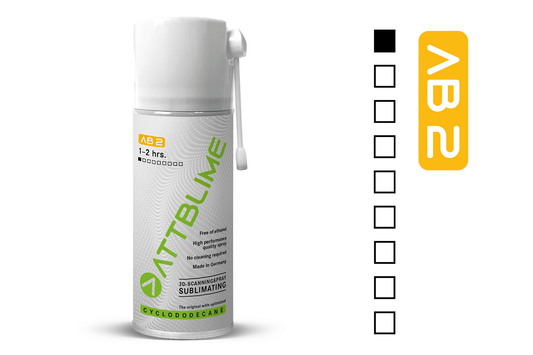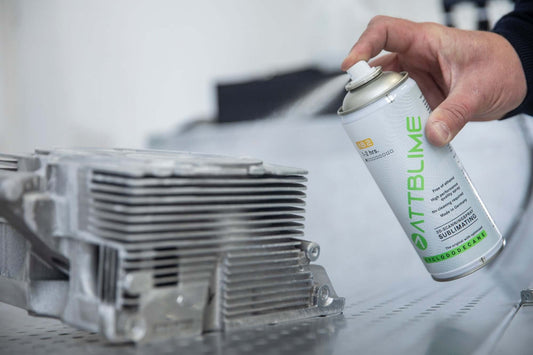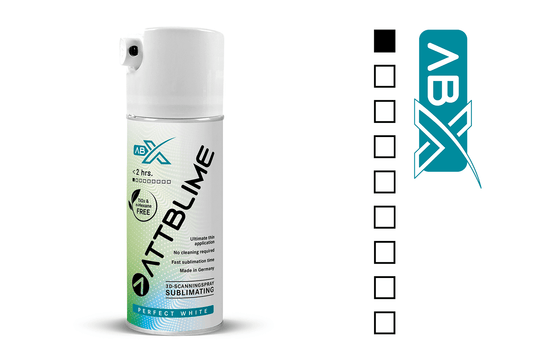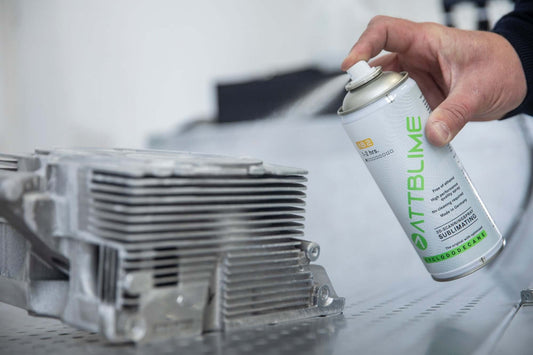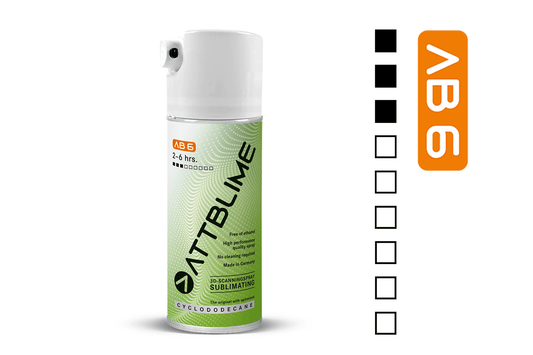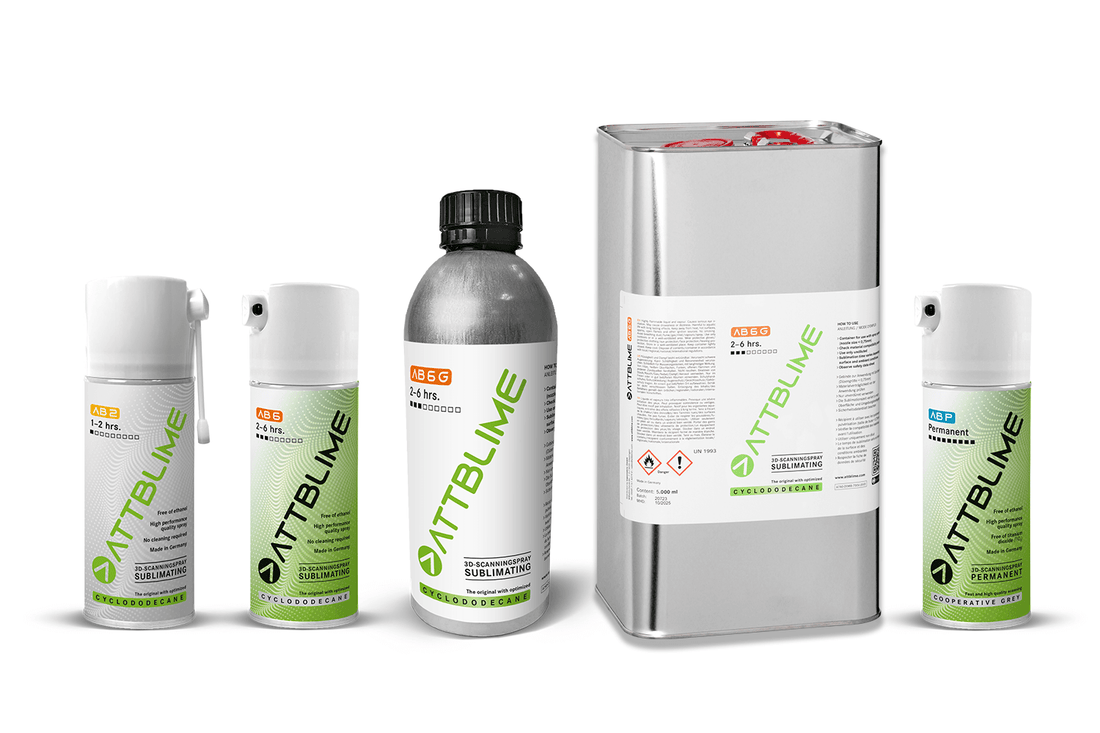
Guide to 3D Scanning Sprays
Share
3D Scanners have become more and more used for applications in metrology, quality assurance or reverse engineering due to their advantages in terms of data acquisition speed, ease of use and accuracy. But since they are based on optical reflection of either laser or structured light, measurements can be difficult on shiny or dark surfaces. The use of 3D scanning spray is therefore important to matte the surface and obtain high quality results. Now a few questions come to mind on scanning spray.
What is 3D Scanning Spray?
3D scanning spray is a matting agent to allow the surface of dark or reflective objects to be captured accurately by a 3D scanner. Scanning spray exists in semi-permanent and vanishing or sublimating spray.
But what is vanishing spray or sublimating spray? Measuring parts with 3D scanners is inherently a non-destructive technique, but using a matting agent on the parts used to add a cleaning step in the inspection process. Recent innovations in chemical formulation allowed matting sprays to be used for 3D scanning applications.
How thick is a coat of 3D scanning spray?
A single coat of ATTBLIME 3D scanning spray is typically only a few microns. The figure below shows the thickness measurements done via a precision non-contact CMM on different matte spray for 3D scanning formulations. ATTBLIME AB2 is often considered the best 3D scanning spray in the market for it's uniform low thickness and repeatability.

What is the best 3D scanning matte spray?
Choosing the right formulation of scanning spray for your application depends on multiple criteria. Are you concerned about leaving residues on the part? In that case, one of the sublimating sprays should be considered. If the parts are discarded, washed or measured over a long period of time (multiple days), then the semi-permanent ABP spray is ideal. It is still easily removable by wiping or washing with water or other solvents if needed.

How long does scanning spray takes to sublimate?
3D Scanning spray sublimation time depends on a few factors:
-
Spray formulation: We offer different formulation of cyclododecane spray that have different sublimation times, ranging from an hour or so to over 24 hours
-
Part's surface finish: different parts surface finish and textures will impact the sublimation time. It is recommended to test the sublimation time on parts before running a time sensitive job
-
Temperature: the higher the temperature, the faster the sublimation will occur
-
Humidity: humidity plays a role in the sublimation. High humidity environment will slow down the sublimation as the air is saturated with water and will have less capacity to carry the scanning spray solvent
- Ventilation or wind: sprayed surfaces subjected to continuous ventilation or wind will sublimate faster than areas with low ventilation
The table displayed above shows the general ranges of sublimation for each formulation, but it depends also on environmental factors. We recommend testing out the sublimation time if timing is critical for your scanning job.
How to use 3D scanning matte spray to obtain the best results?

It is recommended to follow the steps below for best results with scanning spray:
-
Clean the part from moister, grease or residue (also a good practice for best 3D scanning results)
-
Shake the can of 3D scanning spray for at least 30 seconds
-
Apply scanning spray to the part from 6 to 10 inches (15 to 25 cm)
-
Wait for the matting film to form (15 seconds to 1 minutes)
-
3D scan the part
- The film self-sublimates (sublimation time depends on surface finish and ambient conditions)

